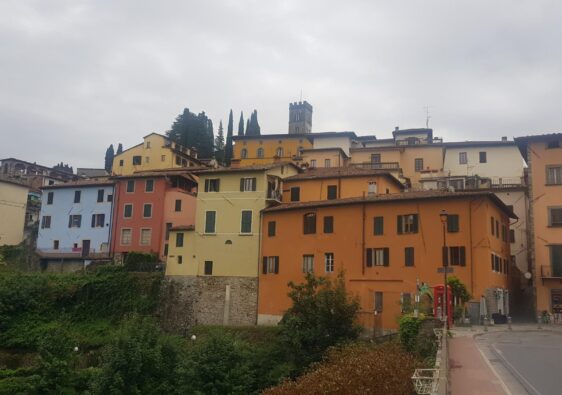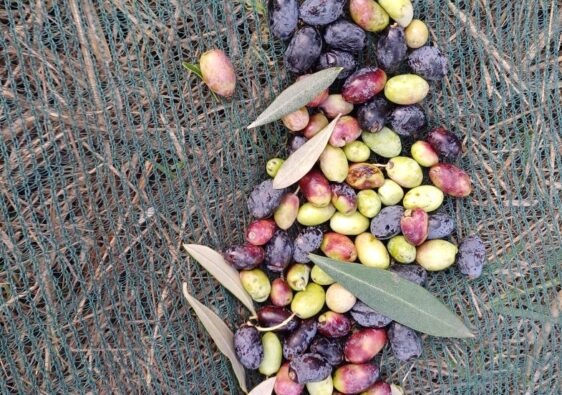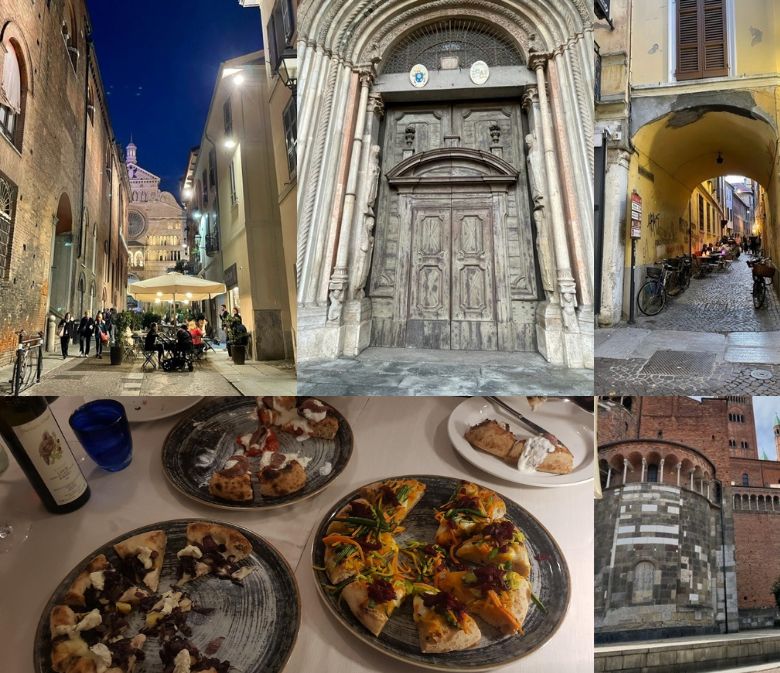
Cremona is a city in the Lombardia region of Northern Italy, situated about a 100km dash down the A1 SE of Milan.
It’s not one of the first places that comes to mind when you think of visiting Italy. We had never heard of the place until we hosted an Italian Rotary Exchange Student who happened to come from Cremona.
And thus we were introduced to Cremonesi life!
We were fascinated to learn that our exchange student attended a school in Cremona that had been operating out of the same premises since before Jan Van Riebeek established a small settlement (later Cape Town) on the southern tip of Africa in 1652!!
But while we had never heard of Cremona, we had certainly heard of Stradivarius violins! However, in our educated ignorance, we had never put Stradivarius and Cremona together in the same sentence.
But of course, our visit to Cremona changed all that!
The Museo del Violino
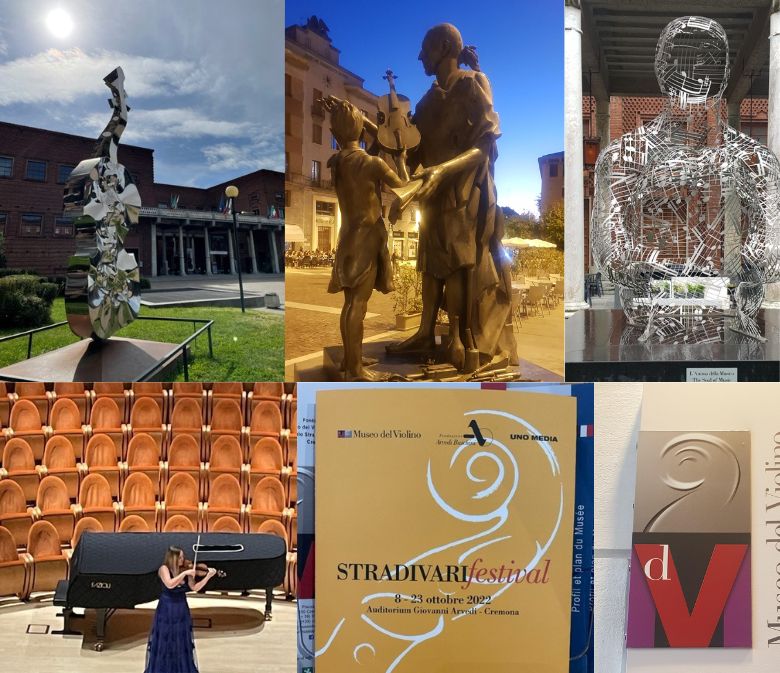
So, having planed, trained, and automobiled from Southern Africa to Northern Italy, we found ourselves ensconced in a friend of our friends’ flat on the Via Gaspare Pedone.
From there it was an easy stroll to the museum. Turn into Via Geremia Bonomelli, skirt the very impressive Cattedrale di Santa Maria and navigate through the two main squares in the old town. Then a quick left into Via Bell’Apsa and we found ourselves on the steps of the very impressive Museo del Violino.
Rock & Roll vs Classical Music
Being Baby Boomers of the early 60’s variety, we were raised on everything from The Beatles to Bread, Abba, Led Zepplin, Grand Funk Railroad, Guns n Roses, Tina Turner, Jim Croce and the list of fabulous diversity is almost endless.
In short, classical music was not on our radar when we were growing up.
And yet, despite that, we found this museum fascinating. It traces the historical development of the violin (and its precursors) from the early beginnings up to the present day. And by and large, all this took place in and around Cremona!
One can’t help but marvel at the skill of the craftsmen across the centuries and there are multiple interactive exhibits that demonstrate just how a violin is constructed.
The really magical part is that, in the very same building, you can not only see real live genuine examples of violins made by master craftsmen like Antonio Stradivari (1644-1737) , Giuseppe Guarneri (1698-1744) and Andrea Amati (?1505-1577), you can hear them played as well!
Yep. If you get your timing right (visit the website for performance times), you can hear one of these centuries old violins being played by a young up and coming violinist. This takes place in a purpose built theatre within the walls of the museum.
It’s well worth attending, even if you are a die hard sixties rocker!
Sidebar
Cremona was hit particularly hard when Covid-19 arrived in Italy. As deaths soared and morale plummeted, Cremona turned to the violin as a source of solace and inspiration. You can see the inspired performance of Lena Yokoyama filmed in Cremona here https://www.youtube.com/watch?v=F13JrI3_AMs
and you can read more about the reason for the performance here https://www.classicfm.com/music-news/coronavirus/violinist-plays-for-italy-cremona-hospital/
Wandering the Streets
Yes, we realize this might be viewed as a bit of a weird pastime. But wandering the streets and watching and interacting with locals going about their business is really fascinating and often rewarding.
And the nice thing about Cremona is that, unlike a Milan or Rome or any number of other tourist hot spots in Italy, your chances of being run over by a stampeding mob of tourists, trying to keep up with the lofted umbrella of a tour leader, is virtually nil!
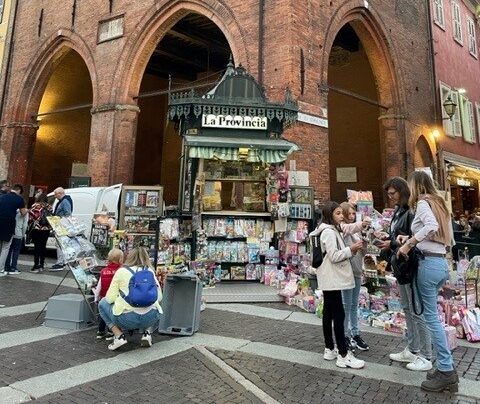
The city has an awesome functional medieval centre and even some of the old defensive wall can be seen further out. Buildings and alleyways dating back centuries abound and form an integral part of the day to day life of the city.
The list of old and impressive architecture is long and fascinating and you could spend a good few days exploring them in detail.
Attractions both big and small
The Torrazzo, the bell tower adjacent to the Cathedral of Cremona (the aforementioned Cattedrale di Santa Maria) is a case in point. At 112 odd meters tall, you can hardly miss it. Even allowing for its prominence, you might be surprised to find out that it is the 3rd highest brick bell tower still standing in the world. It is also the oldest, having been completed way back in 1309.
If you are young and fit, old and brave, or just up for a challenge, 500 odd steps will get you to the top for a magnificent all round view.
To add to it’s uniqueness, the tower houses the largest astronomical clock in the world. It is located well down on the tower so anyone standing at ground level can easily see all the detail (and information) displayed on the clock face.

There are a host of other notable examples of period architecture in the ancient centre of Cremona that are well worth looking at. But they are not the only attractions because the more you wander and explore the streets, the more local little gems you find.
The Wall Art Shop
One of these little gems is “The Wall” art shop at Via Mercatello 60, Cremona. Weird and whacky and delightful is what you will find inside this shop.
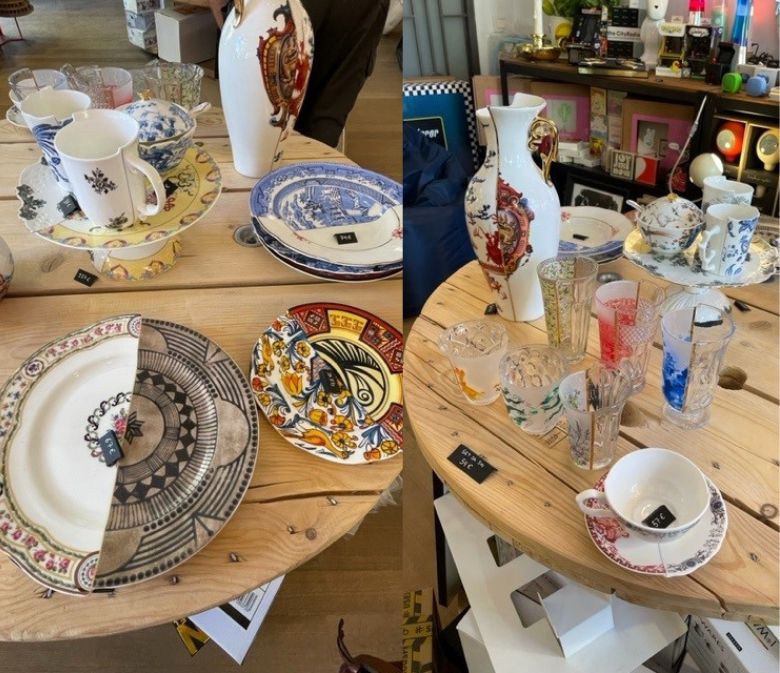
If you want to see what other sort of stuff you can find here then go have a squizz at www.thewallartshop.it
And after a day wandering around discovering more little gems, one simply has to find a good spot and settle down for an aperitivo!
The Genius of an Aperitivo

Aperitivo is defined along the lines of a pre-dinner drink but it is so much more than that. It is a full-on cultural undertaking – think ritual – that is practiced across Italy by Italians of all ages, shapes and sizes. While we have partaken in this little ritual in smaller Italian cities and villages, the population of Cremona seem to take this ritual particularly seriously and come out and participate en masse!
Businessmen and women, old friends, new friends, strangers, families, aunts and uncles all congregate and take their places at tables and chairs that suddenly appear on sidewalks and in the old town squares. The noise level goes up several decibels, food and drink flows out of the nearby cafes and restaurants, and the problems of the world are discussed and solved.
In short, everyone relaxes after a long day. It’s a brilliant life coping strategy that Cremona does particularly well. We didn’t hesitate to join in!
But Wait, There is More (Food)
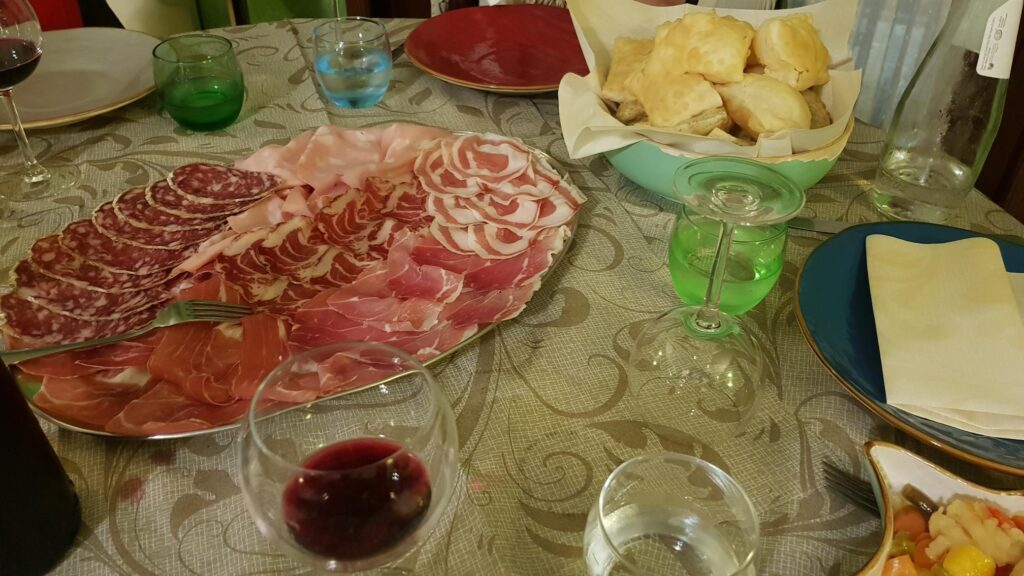
Cremona is situated on the Po river and surrounded by agricultural land and associated industries. It is also surrounded by little villages and towns. Each one of these communities takes great pride in producing their unique contribution to the Italian tradition of simple yet great food.
We were lucky enough to have our Cremona family show us an array of local family owned restaurants both in the back alleys of Cremona and out in the surrounding villages.
Had we been on our own, we would have walked or driven past most of them without a second glance. But stop and go inside and no matter how unassuming the outside, or even the decor inside, might look, the food served is , without exception, simple but stupendous!
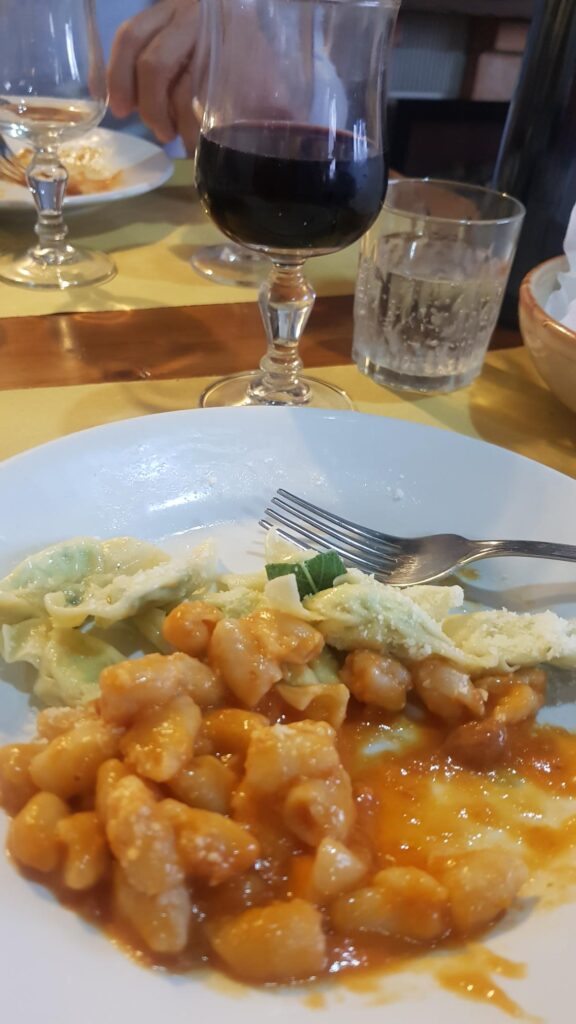
After a week of taking in the sights, sounds and tastes of Cremona, we hopped on a train to Milan and onto Zurich. Even the coffee and pastry we bought at the corner cafe across the square in front of the Cremona Railway Station was superb!
Cremona – we will be back!
PS If you visit Cremona then take some time and also pop down the road and visit Soncino – you won’t regret the small detour!
See more of the wonderful places we have visited around the world.
